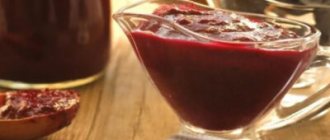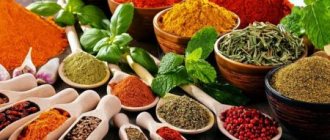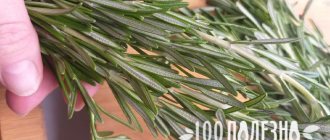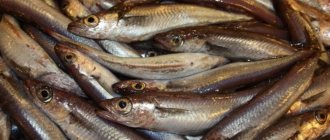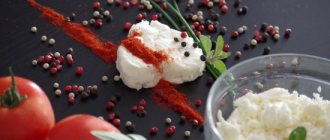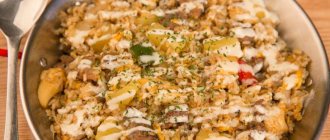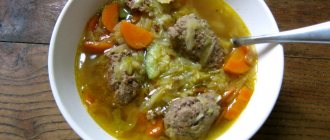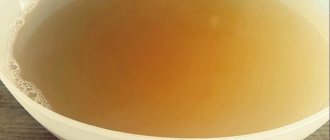Description
The seasoning saffron is dried red-brown threads, the length of which is no more than 3 cm. Saffron is obtained from the flowers of crocus - plants of the bulbous family. Moreover, only varieties that bloom in the fall from September to October are suitable for the spice.
For culinary use, its plantations are established in Azerbaijan, Greece, Dagestan, India, Iraq, Iran, Spain, Italy, China, Morocco, Mexico, Pakistan, Pennsylvania (USA), Turkey, France, Japan, and on Reunion Island.
Each crocus plant produces only 2 goblet-shaped buds. Each newly opened bud has yellow red stamens. It is the latter that are collected by hand. The collection lasts only for a week once a year. It should be early morning without rain.
At this time, you need to have time to cut only 3 dark red stigmas from each bud. The quality of saffron depends on this operation. The fewer yellow stamens that are dried, the higher the quality of the finished saffron spice.
To obtain 1 gram of saffron, you need to collect pistils from 150 crocus buds. It turns out that 1 g contains 450 threads of stigmas.
Some types of other plants are mistakenly classified as spices: marigolds (Imereti), turmeric (Indian) and safflower (Mexican). They are called saffrons because they color foods yellow, just like the true color. But they cannot be considered analogues.
Main characteristics of the spice
As already noted, the original spice is a burgundy-colored plant thread that produces a fairly powerful, specific aroma. The taste of saffron is reminiscent of wine aged for a long time in an oak barrel: it is a spicy bouquet with a long-lasting bitter aftertaste.
Water only enhances the taste of the product, so you need to handle the spice very carefully.
In principle, to enrich the taste of any dish, it is enough to add just a few spicy columns. Another amazing property of the product is its ability to give dishes a pleasant golden hue. This quality is explained by the content of coloring elements in the product, which was used by European textile manufacturers in the Middle Ages.
Use in cooking
Daria Sakharovskaya
Founder and owner of the House of Spices and Herbs "World of Spices".
Ask a Question
Saffron is a charismatic and self-sufficient spice and a legendary and mystical aphrodisiac. If you once listen to the aroma of real saffron, you will never confuse it with anything else. Always purchase this spice only in its whole form!
Fish soup with saffron and Easter cake are my personal culinary “saffron” hits.
I note that the pharmacopoeial list of spices in our country is small due to the fact that little attention and time is paid to research. But according to various researchers, saffron is an effective natural antidepressant.
For culinary purposes, saffron serves as both a flavoring and a coloring agent. The latter is used much more often.
Bakery
Like a dye.
- buns;
- cupcakes;
- Easter cakes and women;
- cookie.
As a flavoring:
- buns;
- sweet yeast dough;
- cakes;
- bakery products.
Dessert
As a dye:
- confectionery production;
- custards.
Groats
As coloring and seasoning:
- rice dishes: pilaf, paella, risotto.
- couscous.
Meat and poultry
As a seasoning:
- white meat;
- mutton;
- beef;
- game;
- rabbit;
- chicken;
- venison;
- lamb;
- soups and stews.
Beverages
As a dye:
- orange and lemon juices;
- yoghurts;
- coffee;
- liqueurs;
- milk and cream;
- cold drinks;
- tea.
Vegetables
As a seasoning:
- artichoke;
- eggplant;
- legumes;
- green onions;
- cabbage;
- potato;
- corn;
- leek;
- carrot;
- Bell pepper;
- tomatoes;
- asparagus;
- cauliflower;
- spinach;
- broths and soups;
- stewed and baked dishes.
Fish and seafood
As a seasoning:
- shrimps;
- mussels;
- scallops;
- halibut;
- oysters;
- stewed, boiled and stuffed fish of valuable species, broths, soups;
- shellfish and seafood dishes.
Sauces
As a seasoning:
- curry;
- mayonnaise;
- gravy;
- fruit sauces.
Fruits, nuts and berries
As a seasoning:
- black and red currants;
- citrus;
- apples;
- broths and soups;
- Dessert;
- baked dishes.
Cold dishes
As a flavoring and coloring agent:
- sausages;
- margarine;
- butter;
- hard cheeses.
Saffron seasoning is used in very small quantities, since it is not only expensive, but also a strong dye. 1 gram of crocus flowers is enough to color 3 liters of water.
Saffron water
Saffron water is used in cosmetology. It has been used by women for many centuries. This substance is used to:
- relieve skin inflammation,
- remove fatty secretions,
- cleanse pores
- moisturize the skin,
- clear the skin of rashes,
- stop itching
- remove acne
- has a tonic effect,
- relieves eye fatigue.
Saffron water
In addition, saffron extract has a rejuvenating effect as it tightens pores and makes the skin elastic. Therefore, it is suitable for making masks. It is especially important to use this tool for people who spend a lot of time at the computer. Using this substance makes the face fresh.
Saffron is rightfully considered the king of spices. It is successfully used in different directions. The only thing that disappoints is the high cost. But, considering the useful qualities and the difficulty with which workers collect each stigma of the flower, the price is completely justified.
0 0 votes
Article rating
Chef's Tips
Question to the expert
How to prepare a water infusion?
To prepare a water infusion, take 1 g of stigmas and brew 1/2 cup of boiling water, leave for 15-20 minutes.
For how many products is 1/2 cup of water or alcohol infusion sufficient?
This amount is enough for 10-15 servings of solid foods or 1-1.5 kg of dough.
How else to prepare saffron?
Take a dry frying pan and hold the saffron stigmas on it a little longer than necessary to dry them, but do not overcook them. Then grind into powder. Before adding to rice or vegetable dishes, dissolve this ground saffron in water or milk, and then pour into the dish being prepared. In this form, you can also use the spice from crocus stamens in the manufacture of confectionery products.
When is saffron tincture added during cooking?
Saffron infusion is poured into various dishes 5 minutes before readiness, and into the dough during kneading.
Benefits and contraindications
The chemical composition of saffron determines the presence of a huge number of positive qualities. Of course, it contains the following elements:
- Saturated fatty acids;
- Alimentary fiber;
- Vitamins A and B;
- Potassium and sodium;
- Phosphorus and magnesium;
- Zinc and iron;
- Copper and selenium.
Let's talk about the benefits of this small flower?
- Improves digestive processes;
- Has a mild analgesic effect;
- Helps fight depression and bad mood;
- Purification of blood composition;
- Provides a surge of strength and improved mood;
- Improves facial skin;
- Helps cleanse liver cells and bile ducts;
- Used to prevent heart and vascular diseases;
- Increases brain performance;
- Stimulates cell renewal, hair and nail growth;
- Reduces appetite;
- Regulates metabolism;
- Improves the conductivity of nerve impulses;
- Treatment of diseases of the endocrine system;
- Reducing the severity of allergic reactions;
- Has a slight antispasmodic effect;
- Reduces fermentation processes in the intestines;
- Helps in the prevention of infertility;
Since we are discussing health benefits and harms, we should not limit ourselves to mentioning only positive qualities. It is worth talking about the possible negative effects that are inherent in each seasoning.
It is not recommended to consume the seasoning:
- For diabetes;
- Pregnant and lactating women;
- Children under three years of age;
- Suffering from high blood pressure;
- Patients with ulcers or gastritis;
- In the presence of diseases of the nervous system or high excitability;
- Persons prone to allergic reactions.
Please note that the consumption of saffron should be strictly regulated - in no case should you add the seasoning in large quantities, it is dangerous. If you have any questions, you should consult a doctor.
Now let's talk about how to identify a fake and find the original.
How to choose
A high-quality finished spice is a mass of tangled dark red-brown and light yellow threads, greasy to the touch. Their color is uneven.
If you place such a thread in a glass of water, it will not sink, but the water around it will gradually begin to turn yellow. When adulterated, the water changes color instantly.
Since crocus spice is expensive, there are a lot of people willing to sell counterfeit goods. Buy natural saffron only in specialized spice stores. In the market, only marigold or calendula flowers can pass it off as it, but also tinted cut paper, plastic, apple peel, etc.
Dry saffron stigmas are long, fluffy, dark red threads. Among the total mass there should be as few yellow stamens as possible. When purchasing, give preference to the stamens rather than the ground powder.
In special stores, real dried saffron is sold in glass or ceramic containers. Sometimes sellers even offer to look at the stamens under a magnifying glass to make sure of their quality.
Be sure to find out where the spice was grown. There are labels that say “Turkish saffron”. In fact, this product cannot be Turkish saffron. Most likely it was brought from Turkmenistan. It's fake.
The cost of real spice starts from $8 per 1 gram.
What spices does saffron go with?
In the process of preparing tasty and healthy food, there is often a need to add not one, but several spices. In this regard, saffron is very loyal, as it harmonizes perfectly with a large number of popular spices:
- cardamom;
- cinnamon;
- cloves;
- coriander;
- turmeric;
- nutmeg;
- cumin;
- mint;
- rosemary and a number of other spices.
The combination of saffron and almonds is very interesting in terms of taste. But you shouldn’t use saffron together with peppers, since such an alliance can distort the unique aroma of the product.
What can be replaced
Marigold
Turmeric
Safflower
Turmeric, of course, is cheaper, but you can achieve the desired shade if you add a little paprika. The optimal proportion is 1 part turmeric to 2 parts paprika.
Dried and crushed marigold buds are replaced 1:1.
Safflower has an interesting, distinctive taste. In addition, it also colors dishes a beautiful golden color. The proportion for replacing saffron is 1:1.
Beneficial features
This product has a positive effect on the body. Thanks to the beneficial properties of saffron, brain activity improves and Alzheimer's disease is alleviated. Consuming the spice helps cleanse the kidneys, bladder, and remove waste and toxins. Helps with diseases of the liver and cardiovascular system. The spice is good for the intimate health of men. In addition, it is a strong aphrodisiac.
Saffron is used in pharmaceuticals; it is included in more than three hundred medications.
Cabbage turns...
By the way, saffron perfectly complements vegetables, be it a simple salad or ratatouille. Cabbage with saffron turns out especially delicious. The recipe for a spicy white cabbage salad is simple and will surely appeal to all lovers of gourmet cuisine.
To prepare this dish you will need:
- half a head of cabbage;
- one medium carrot;
- one large onion;
- two large cloves of garlic;
- liter of water;
- a tablespoon of vinegar (preferably 7%);
- two tablespoons of sugar;
- one tablespoon of table salt;
- one teaspoon of ground black pepper;
- half a teaspoon of red hot pepper;
- one teaspoon of coriander;
- several threads of saffron (three or four pieces);
- if desired, you can add a little raisins or barberries;
- vegetable oil for frying.
The main thing is to know when to stop!
So, now you know what saffron (seasoning) is. Where should I add it so as not to spoil the dish and waste the food? After all, you must admit, it will be very disappointing if, after several hours spent in the kitchen in the name of a culinary masterpiece, the dish is spoiled by incorrectly chosen seasonings. Remember: saffron seasoning, the use of which can turn any dish into a culinary masterpiece, is never added in large quantities, otherwise it will give the dish an unbearable smell and excessive bitterness.
Worth its weight in gold
By the way, to get just 1 gram of this spice, you need to pick about 150 flowers, and 1 kilogram of dry saffron is obtained after processing about 150 thousand crocus flowers. From 1 hectare of saffron plantation you can get up to 20 kilograms of finished spice. Mind-blowing, isn't it? It is not surprising that the price of this truly royal seasoning is so high: a wholesale batch of saffron costs about 3,000 euros, while 1 gram of this spice retails for 10 dollars!
Since ancient times, saffron has been considered a cure for literally all ailments. During excavations carried out on one of the islands of the Aegean Sea in 2014, researchers found ancient frescoes that are more than 3,500 years old. They depicted a deity who healed the suffering with the help of saffron. Scientists also discovered that in ancient Iran, saffron was originally used not as a medicinal panacea and seasoning, but as a dye for fabrics.
Shaker delight
Category: Desserts Cookies
Incomparable cookies of bright lemon color from a series of oriental sweets. If you want to surprise your guests by preparing such a fragrant, melt-in-your-mouth miracle in just 15 minutes, then this is the place for you!
Egg yolk Powdered sugar Melted butter Vanillin Cognac Saffron Wheat flour
Persian treasure
The Persians actively used saffron. They used it as a dye for fabrics, an ingredient in perfumes, medicines and bath liquids.
The spice was also considered an excellent remedy for melancholy . For this purpose, saffron threads were laid out on the bed or tea was brewed from them. It was also used as an assistant in case of poisoning and was even used to treat measles. Persian saffron served Alexander the Great during his Asian expeditions as a bath additive and was intended to heal battle wounds. It is believed that it was thanks to this ruler that saffron came to Greece.
Places of growth
Saffron grows mainly in the countries of Southern Europe, Iran, India; it is almost impossible to find it in the wild. The main supplier of saffron to the world market is Iran, which produces almost 90 percent of the total volume of saffron.
Saffron itself is orange-red in color, so it is often confused or replaced with cheaper spices of the same color. These are turmeric, marigold or safflower. The aroma of saffron is subtle with a floral tint, its taste resembles the taste of fresh bitter mountain honey.
priceless flower
The spice saffron is nothing more than the stigma of the Crocus sativus flower, which belongs to the iris family. The plant itself is interesting because it does not have a stem: the flower and leaves develop directly from the top of the bulb. No more than three flowers appear from one tuber, the color of which varies from pale lilac to deep purple. The crocus blooms for only 3 days at the beginning of autumn, and the most expensive seasoning - saffron - is the crocus pestle, which consists of 3 long thin tubes of bright red-orange color. In order for the saffron spice to be of high quality, crocus flowers must be collected on the day they bloom, otherwise they will quickly fade.
Fake from Turkey
Most often, fake spice under the guise of saffron is sold at the spice market in Turkey. Red-orange slides are positioned by sellers as a seasoning. Turkish saffron attracts the inexperienced buyer with its reasonable price and strong aroma. It is quite natural that an ordinary person is unlikely to be able to determine the authenticity of a spice by its color, aroma and taste - for this you need to be a connoisseur of this spice. Under the guise of Turkish saffron, either crushed turmeric root or dried safflower flowers (called Mexican saffron) are often hidden. These products are a budget substitute for real spices. The so-called Turkish saffron is a seasoning, the use of which is widespread: in Turkey, the Caucasus, France, Poland, Italy and in the territories of countries that were once part of the USSR.
Handmade
By the way, the bloomed crocus is collected the old fashioned way - by hand, since this delicate plant does not tolerate brute force or the touch of any machinery. The harvested crop is laid out on the table and the stigmas are plucked from the flowers (again by hand). Then they are dried at a temperature of 50 degrees in a special dryer for 13-15 minutes. The dried stigmas are dipped into water - this is how the spices are sorted. Stigmas that have sunk to the bottom are considered to be of the highest quality, and accordingly, their price is very high. The same stigmas that remained floating on the surface are classified as third grade and cost a little less.
